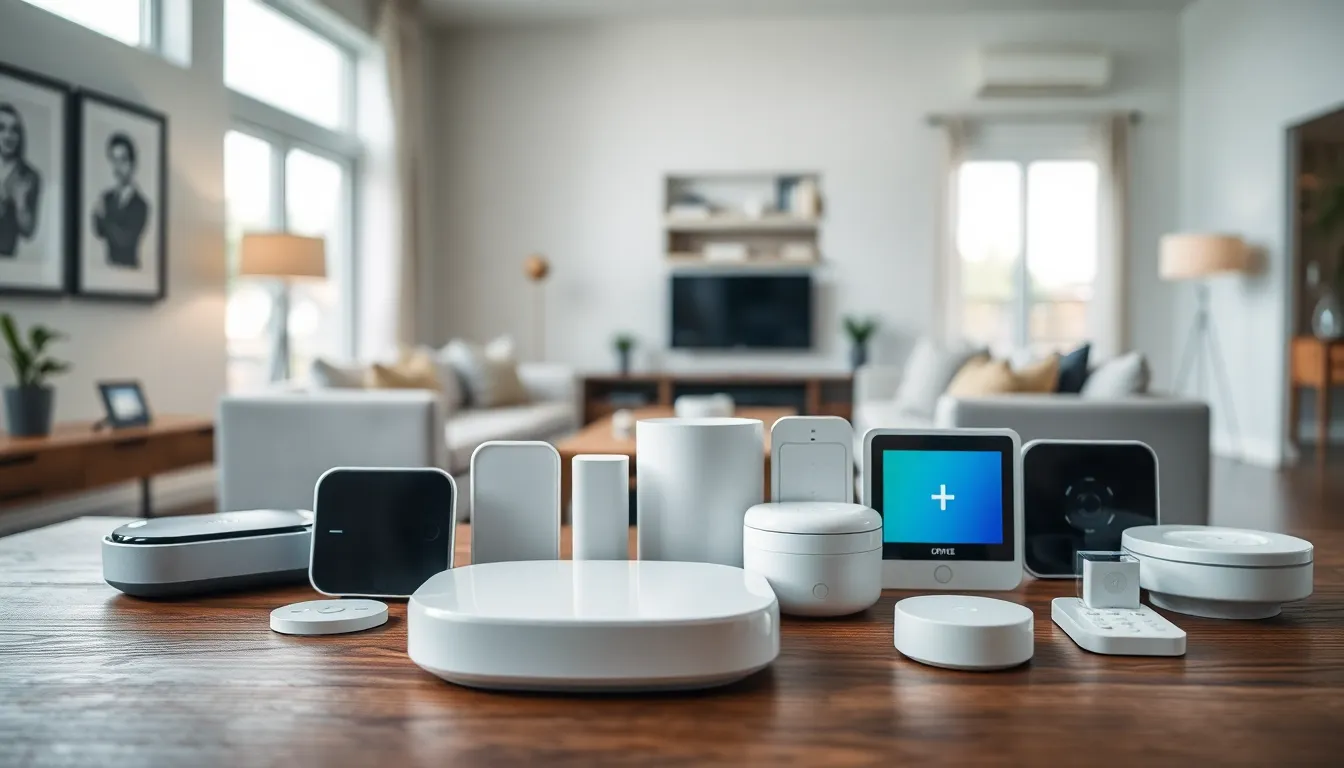Table of Contents
ToggleIn a world where your toaster could be plotting against you, the Internet of Things (IoT) has transformed everyday objects into smart devices. But with great connectivity comes great responsibility—and a whole lot of security headaches. As more gadgets join the IoT party, they bring along a host of vulnerabilities that could leave users feeling like they’ve invited a raccoon into their kitchen.
From smart fridges leaking personal data to baby monitors that seem to have a mind of their own, the challenges of IoT security are no laughing matter. As the digital landscape evolves, so do the tactics of cybercriminals looking for an easy target. Understanding these challenges isn’t just important; it’s essential for anyone looking to keep their smart home safe and sound. Let’s dive into the wild world of IoT security challenges and discover how to safeguard our connected lives.
Overview of IoT Security Challenges
IoT devices, including smart fridges and baby monitors, face numerous security challenges. With increased connectivity comes greater vulnerability to cyber threats. Weak default passwords serve as a common issue, making unauthorized access easier for hackers. The lack of standardization across devices often amplifies these vulnerabilities, leaving users exposed.
Data privacy remains a significant concern. Many IoT devices collect sensitive information without proper encryption or security protocols. When data is inadequately protected, unauthorized access can lead to breaches and identity theft. Security updates can also pose a problem, as many devices lack regular updates, making them targets for cybercriminals.
Interconnectivity introduces risks. Each connected device can serve as a potential entry point for attackers. As devices communicate with each other, a compromise in one device may affect the entire network. Organizations face challenges ensuring secure communication protocols among various devices.
User awareness plays a critical role. Many individuals underestimate potential weaknesses in their IoT devices. Educating users about security practices, such as changing default settings and regularly updating firmware, is vital in mitigating risks. Increased awareness can immensely reduce the likelihood of successful cyber attacks.
The growing number of IoT devices exacerbates these challenges. As more devices join networks, the attack surface expands, increasing security complexities. Striking a balance between convenience and security becomes essential as IoT technology evolves. Addressing these issues proactively protects not only devices but also users’ privacy and data integrity.
Common Vulnerabilities in IoT Devices

Security vulnerabilities in IoT devices pose significant risks to users. These weaknesses can easily be exploited by malicious actors, leading to data breaches and unauthorized access.
Insecure Communication Protocols
IoT devices often use unencrypted communication protocols, exposing data to interception. Major issues arise when devices transmit sensitive information over public networks without proper encryption. Attackers can exploit these vulnerabilities to eavesdrop on conversations or gain access to personal data. Using secure protocols, such as TLS or SSL, helps protect data in transit. Organizations should implement measures to ensure that all device communications are encrypted and secure, reducing the risk of interception.
Weak Authentication Mechanisms
Authentication mechanisms in IoT devices frequently lack robustness, making them vulnerable to unauthorized access. Many devices rely on default passwords or simple PINs that users neglect to change. This oversight allows attackers to gain control with ease. Implementing strong, unique passwords and multi-factor authentication significantly enhances device security. Manufacturers should prioritize the development of secure authentication methods, ensuring that devices validate user identities effectively. These strategies mitigate risks associated with weak authentication and enhance overall security.
Impact of IoT Security Challenges
IoT security challenges significantly impact users and industries, necessitating serious attention. With the rise in connected devices, the consequences of inadequate security practices can be severe.
Data Breaches and Privacy Issues
Data breaches frequently occur due to insecure IoT devices and weak authentication methods. Many users unknowingly leave default passwords intact, opening doors to unauthorized access. Privacy issues arise as sensitive data often transmits unencrypted across networks. Attackers can intercept communications between devices, leading to identity theft and fraudulent activities. Organizations face substantial financial and reputational repercussions if customer data becomes compromised. Consequently, implementing stronger encryption methods and enforcing strict data privacy measures becomes essential for safeguarding personal and business information.
Threats to Critical Infrastructure
Critical infrastructure systems, such as power grids and healthcare networks, rely increasingly on IoT devices. A security breach in these systems can result in widespread outages or service disruptions, endangering public safety. Attackers who exploit vulnerabilities may manipulate operational technology, leading to catastrophic outcomes. Instances of ransomware targeting these infrastructures have already emerged, causing costly repairs and prolonged downtime. Enhancing security protocols for these essential services is vital to ensure national security and protect citizens from potential threats. Implementing robust security frameworks will bolster defenses against emerging risks linked to IoT connectivity.
Strategies to Mitigate IoT Security Challenges
Addressing IoT security challenges involves proactive measures focused on user practices and device management.
Implementing Stronger Authentication
Utilizing stronger authentication methods significantly enhances IoT device security. Implementing unique passwords mitigates the risks associated with default credentials. Multi-factor authentication adds an extra layer of protection, making unauthorized access more difficult. Regularly changing passwords can further decrease vulnerability. Employing biometric authentication, like fingerprints or facial recognition, represents a growing trend among advanced IoT devices. Not only does this protect individual devices, but it also strengthens the entire network’s integrity.
Regular Firmware Updates and Patch Management
Regular firmware updates and effective patch management play crucial roles in minimizing IoT security risks. Device manufacturers frequently release updates to address vulnerabilities and improve security features. Scheduling regular checks for updates ensures devices remain secure against emerging threats. Automation tools can simplify this process, promoting timely application of critical patches. Users must prioritize updating their devices to safeguard sensitive data. Inadequate patch management can lead to severe security breaches, underscoring the importance of consistent vigilance in device maintenance.
Addressing IoT security challenges is essential for protecting both individual users and broader systems. As smart devices become increasingly integrated into daily life the potential vulnerabilities grow. Users must remain vigilant about device security by employing strong passwords and enabling multi-factor authentication.
Regular updates and awareness of potential threats can significantly reduce risks associated with IoT devices. Organizations also bear the responsibility of implementing robust security measures to safeguard sensitive data and maintain trust.
By prioritizing security in the IoT landscape users can enjoy the benefits of connectivity while minimizing exposure to cyber threats. It’s crucial to stay informed and proactive in securing these devices to ensure a safer connected experience.




